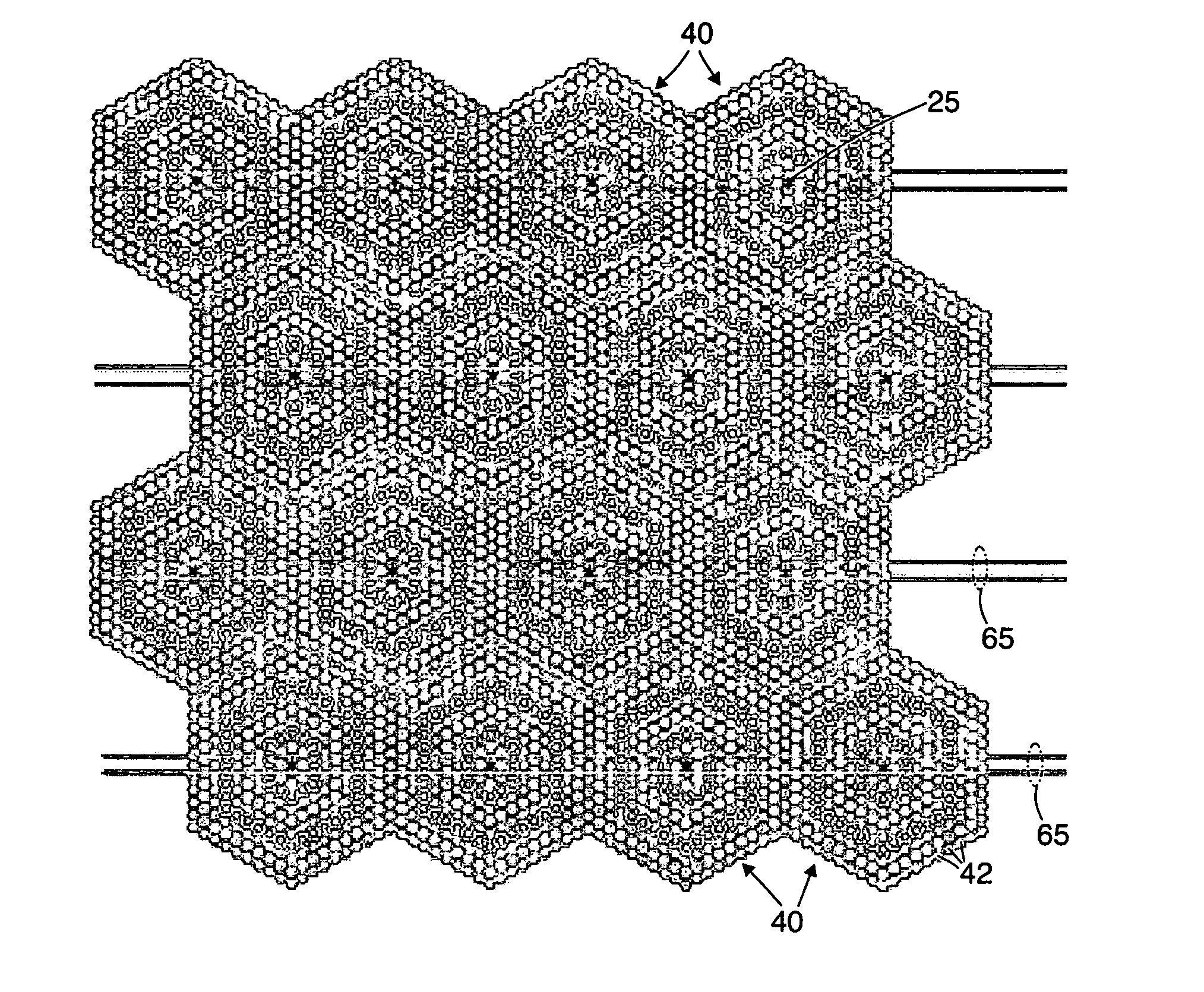Large aperture rectenna based on planar lens structures
a planar lens and large aperture technology, applied in the direction of antenna details, electrical equipment, antennas, etc., can solve the problems of limiting the lifespan of the rectenna, unable to easily supply high-energy bursts without significant additional, and limited the amount of weight it can carry
- Summary
- Abstract
- Description
- Claims
- Application Information
AI Technical Summary
Problems solved by technology
Method used
Image
Examples
Embodiment Construction
[0057]A problem in trying to develop a practical earth to space power transmission system is that the voltage across diodes used in a rectenna has not been sufficient in a prior art rectenna to be of practical use to such an application.
[0058]However, the voltage across each diode 25 can be increased while reducing the number of diodes by using a lens-like structure or lenslet 40, shown in FIG. 5, to concentrate power from a large area over a small number of diodes 25 in an array of lenslets 40. For example, if one wanted to generate 20 volts across each diode 25, then the incident power from 40 square wavelengths, or a 2-cm diameter area, needs to be collected. This would not only boost the voltage across each diode—and also the diode's efficiency—it would also reduce the number of diodes to about 3 million for the example described above, which equates to about 100 wafers' worth of diodes. Further reductions in the number of diodes required could be achieved with an even larger co...
PUM
 Login to View More
Login to View More Abstract
Description
Claims
Application Information
 Login to View More
Login to View More - R&D
- Intellectual Property
- Life Sciences
- Materials
- Tech Scout
- Unparalleled Data Quality
- Higher Quality Content
- 60% Fewer Hallucinations
Browse by: Latest US Patents, China's latest patents, Technical Efficacy Thesaurus, Application Domain, Technology Topic, Popular Technical Reports.
© 2025 PatSnap. All rights reserved.Legal|Privacy policy|Modern Slavery Act Transparency Statement|Sitemap|About US| Contact US: help@patsnap.com



